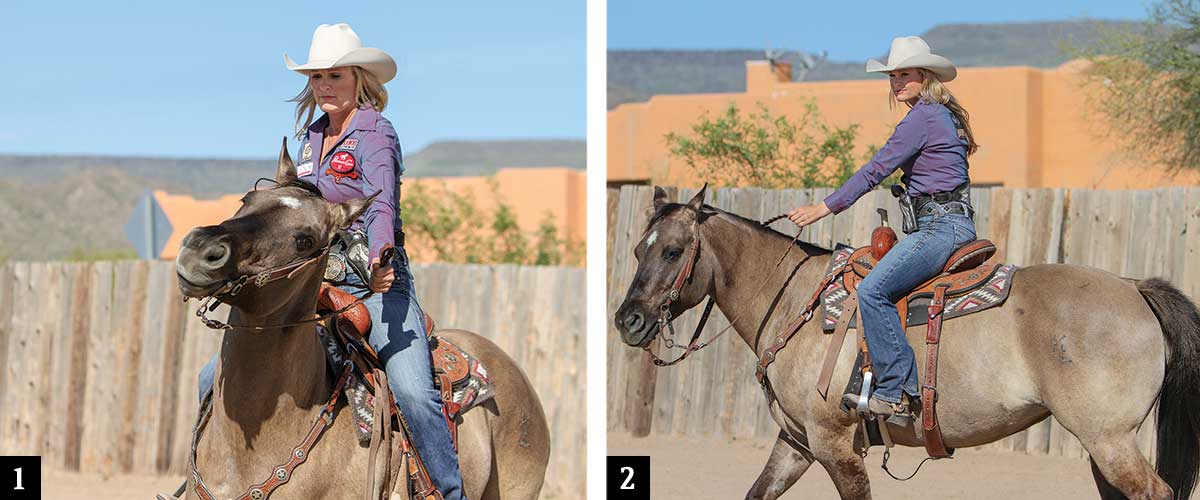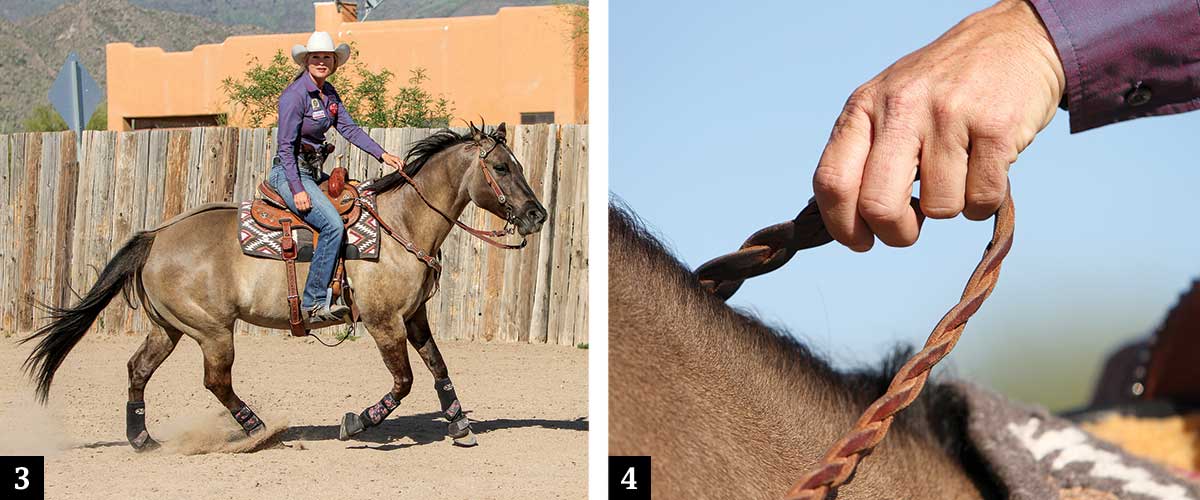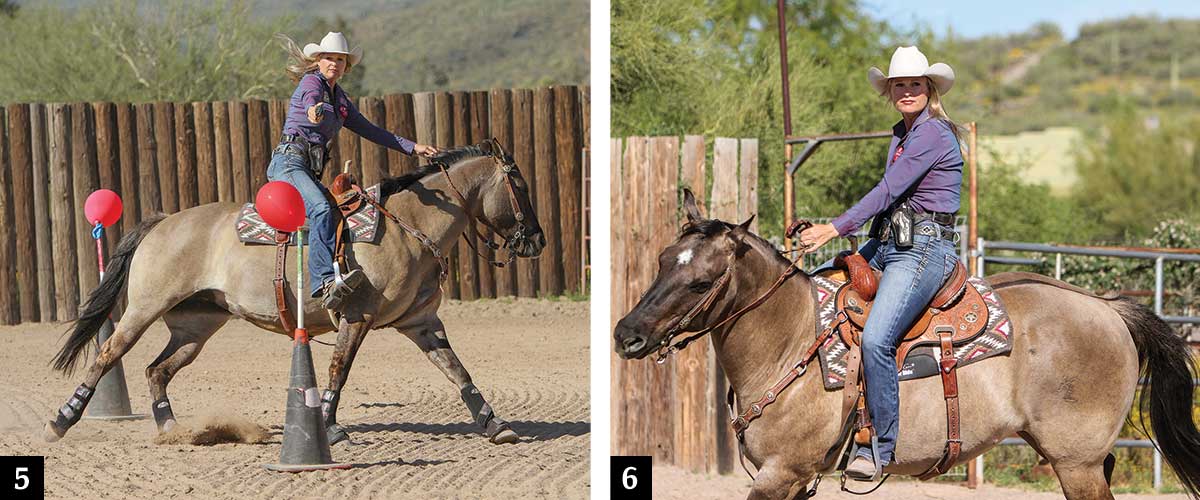When you have one hand on the reins and one hand on a gun, two-handed, direct reining simply isn’t an option. (That is, pulling with your left hand to go left and your right to go right.) Neck reining and effective rein management are critical, and a combination of circle, pattern, and lead-change work is an excellent way to practice these skills at home.
Tack up your horse in a bridle he responds to, and grab your roping (loop) reins. Begin working at a slower gait to start (walk or jog) on circles and build speed as your reflexes sharpen and your horse responds to your cues. For the pattern work, set up four shooting targets (or barrels or cones) in a square with 15 to 20 feet between each target, depending on the size of the pen.

One
Here’s what I see happen all-too often when I work with riders and at competitions—incorrect neck reining. I’m holding the rein in a fist (like an ice cream cone), instead of the correct way (palm down). I’ve asked my horse to turn left by pulling my hand out to the left, which lays the rein across the right side of her neck. I didn’t adjust my rein length or position, so there’s a firm pull on the right side of the bit. My mare responds by lifting her head and tipping her nose to the right instead of turning left and following her nose. Not only is it visually unappealing, it creates a potentially dangerous imbalance in a turn and also drives her left shoulder down, which means she’s not carrying herself properly. In all, this response can cost valuable seconds in a run and teaches my horse a bad habit. But it can be avoided with correct cueing and focused practice.
Two
This is the cue and response I’m looking for and you should strive toward. With my palm down, I’ve walked my fingers down the left side of the rein, shortening it to tip her nose in the direction I want to go. I’ve also lifted my hand and pushed it forward so I’m not pulling against her face—she has room to adjust her neck position and turn her nose to the left. My rein isn’t too short nor overly long and hard to manage. It’s short enough that I can handle it easily, but long enough that my mare has a release instead of constant pressure on the sensitive points of her mouth from a rein that’s adjusted too short for her comfort.

Three
I walk, jog, and lope circles, changing directions regularly with simple lead changes while adjusting the position of my hand on the rein to give the correct cue. Notice that my palm is always facing down. That keeps my hand in a balanced position when I’m not asking for a turn and keeps slack in the rein so I’m not always pulling on my mare’s face. Drilling this repeatedly with turns to the left and right is the only way I can “train” my fingers to be nimble enough to walk back and forth along my rein until it becomes second nature and something I don’t have to think about when riding.
Four
You can even practice this off your horse while sitting on the couch or watching TV. Hold your loop rein, palm down, and walk your fingers back and forth along as you would to cue your horse to turn.

Five
To further refine your rein management and improve your horse’s response, move from your circles to a pattern set up in your arena to mimic a shooting course. In the pattern here, I lope three-quarters of a circle around a target, and then I move to the next partial circle. This gives me ample opportunity to practice my turn cues and move my hands up and down my rein. Here you can see that I’m completing a left turn around the marker. Even though I’m shooting at a target to my right, I can rein my horse to the left, keeping her nose on her path and her shoulders elevated.
Six
For comparison, I’m also making a left turn here at the lope. Notice my incorrect hand position (back to a fist), the shortness of my rein, and my horse’s reaction to my cue. She can’t look where she’s going, and she’s dropped her inside shoulder because I’m pulling on the opposite side of the bit instead of guiding her nose to the inside of the turn. If we were to add speed in this position, she wouldn’t be able to move efficiently in her pattern work, which adds precious seconds on the clock. Or worse, she could easily lose her balance.
Kenda Lenseigne, Phoenix, Arizona, worked with top cutting horse trainers in Texas and California. But when she tried mounted shooting, she was hooked. She’s the first woman in the history of her sport to win the Overall World Champion title, and continues to lead the pack of competitive shooters. Learn more at kendalenseigne.com.






